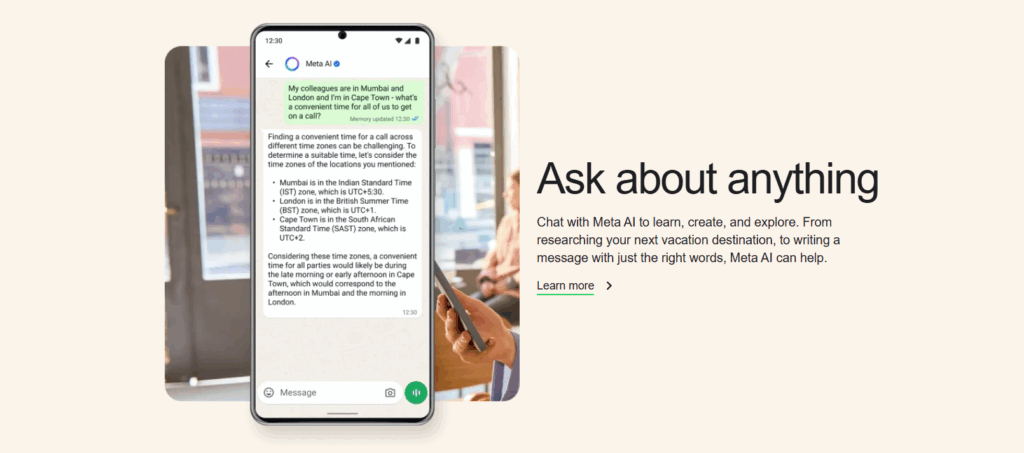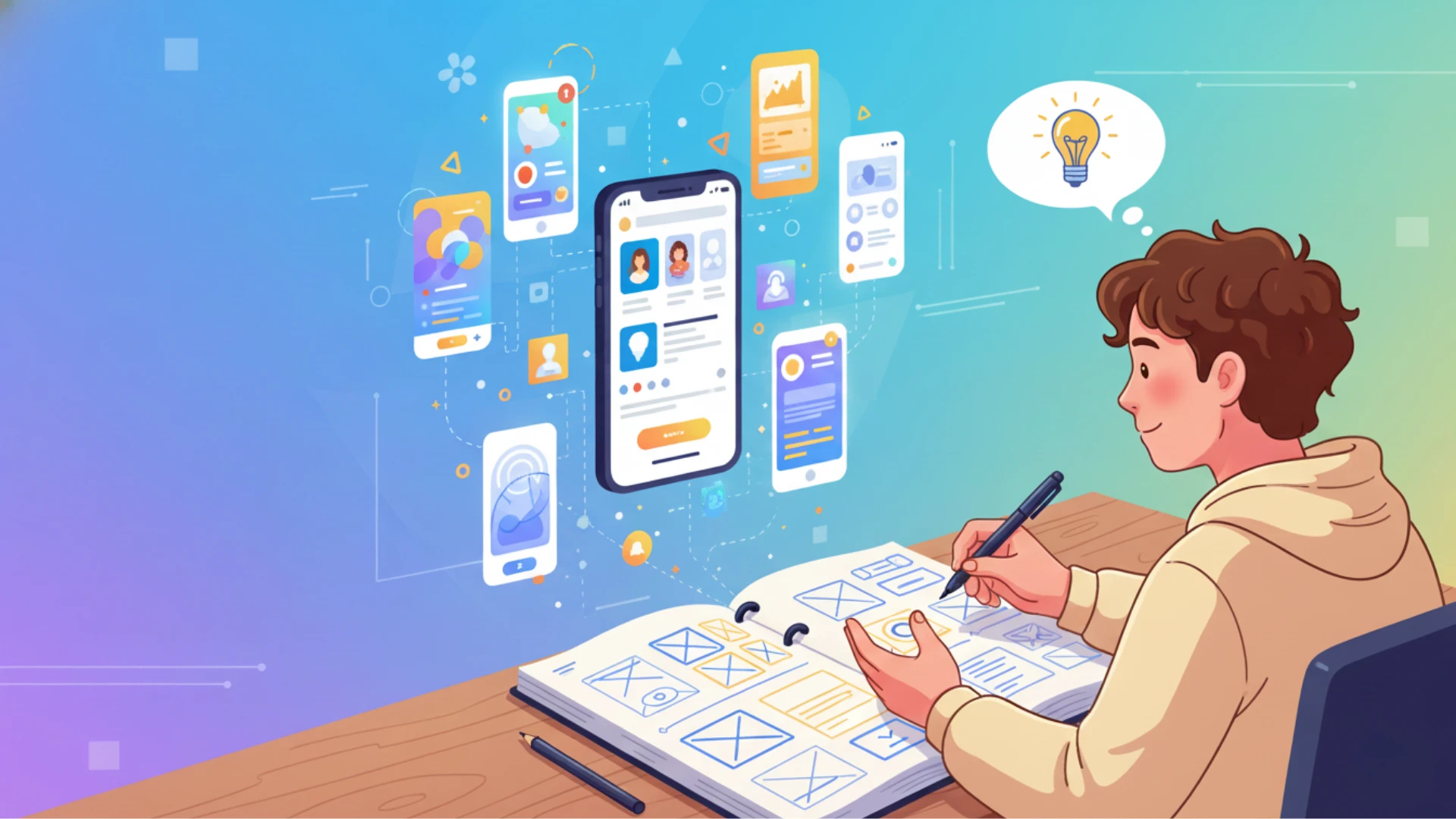Mobile applications are no longer just extensions of digital presence. Instead, they’re now the primary interface between brands and users.
Approaching 2026, the line between web, mobile, and AI experiences seems to be disappearing fast. For CEOs, CTOs, and tech leaders, this convergence means rethinking mobile strategy not as an engineering decision but as a growth lever.
From AI-powered personalization to real-time data pipelines and low-code ecosystems, the latest mobile app development trends are shaping how enterprises design, deploy, and scale experiences at speed.
In this blog, we explore the top mobile application development activities and how brands can leverage these trends for effective customer engagement.
The State of Mobile App Development in 2026
According to Statista’s 2024 forecast, the global mobile app market is poised to reach $756 billion by 2027.
This data underscores that enterprise-wide adoption of mobile-first solutions is growing at double-digit rates.
Accordingly, CTOs are prioritizing scalable, secure, and AI-native platforms. On the other hand, CEOs are aligning product roadmaps directly with customer experience KPIs.
Looking at 2026, understanding the state of mobile app development is no longer optional; it’s a prerequisite for any enterprise serious about sustainable growth and long-term competitiveness.
20 Mobile App Development Trends Taking Shape in 2026
Mobile app development in 2026 is evolving faster than ever.
Therefore, knowing where the market is headed can help enterprises make smarter investment decisions.
Below are some mobile app development trends in India that are shaping this transformation:
1. AI-Powered Personalization
In 2026, app ecosystems will use AI-driven behavioral analytics in mobile app development to personalize every interaction, such as content, UI, and even feature availability.
According to Accenture’s 2025 Technology Vision report, 79% of executives say personalization through AI has become a competitive differentiator.
By integrating AI models at the edge and leveraging predictive insights, brands are now designing hyper-individualized journeys that increase retention rates by up to 40%
For example, Meta recently integrated AI capabilities through its Meta AI into WhatsApp to improve chat suggestions and contextual responses.

[Source – https://www.whatsapp.com/meta-ai?lang=en]
For CTOs, these AI chatbots mean investing in continuous data feedback loops and model governance frameworks that keep personalization scalable and compliant.
For CEOs, it’s a signal that mobile strategy must evolve from “reactive user experience” to “proactive customer intelligence.”
2. Cross-Platform Development Dominance
Cross-platform frameworks like Flutter, React Native, and Kotlin Multiplatform are dominating enterprise app pipelines. Reason – reduced time-to-market and unified codebases across iOS, Android, and web.
A 2025 GitHub developer report shows a 42% rise in cross-platform repositories compared to 2023. With modular architectures and shared UI components, companies are reducing dev costs by 30–40% while maintaining native performance.
CTOs favor it for scalability; CEOs see it as budget efficiency. The most successful mobile-first firms in 2026 will be those that build once, deploy everywhere, and iterate continuously.
If you’re evaluating vendors or comparing agencies, explore actionable tips on choosing a mobile app development company before finalizing your partner.
3. On-Device AI and Edge Computing
Latency-sensitive workloads such as voice recognition, AR, and real-time analytics are now running on-device, thanks to advances in edge AI and local model deployment.
This shift redefines mobile architecture. Apps are becoming more autonomous, resilient to connectivity issues, and privacy-friendly since sensitive data stays local.
CTOs can reduce backend loads and API costs, while the app design team gains new design freedom for near-instant responses.
Basically, edge computing is about user trust and operational efficiency. In 2026, leading app ecosystems will run hybrid pipelines: train in the cloud, infer at the edge.
4. Low-Code and No-Code Acceleration
By 2026, Gartner predicts that 70% of new enterprise apps will use low-code or no-code platforms for at least part of their development stack.
This democratization allows non-technical teams to contribute directly to product creation while freeing engineering bandwidth for core innovation.
From drag-and-drop workflows to visual APIs, LCNC tools enable startups and enterprises alike to test, deploy, and iterate apps 3x faster.
For CTOs and product heads, the opportunity lies in pairing low-code agility with enterprise governance. Consequently, this can help in ensuring consistency, compliance, and scalability.
As one of the most interesting mobile app development trends, this redefines the build-measure-learn cycle and sets the stage for hybrid development teams.
5. 5G and Edge-Enabled Experiences
5G is no longer about faster downloads. Rather, it has brought in an architectural transformation. With ultra-low latency and massive device connectivity, mobile apps can now process real-time data, stream immersive content, and run compute-heavy tasks on the edge.
A 2025 Ericsson Mobility Report projected that over 60% of mobile traffic will be 5G-based by 2026, enabling seamless AR navigation, real-time telehealth, and multiplayer experiences without performance drops.
For CTOs, this means the app experience is no longer limited by backend constraints. Developers can design lightweight clients that tap into nearby edge servers for computation, drastically reducing API lag and improving reliability.
In 2026, expect enterprises to leverage 5G for instant app interactions, IoT orchestration, and next-gen cloud gaming.
6. AR, VR, and Mixed Reality for Business
Extended Reality (XR) is leaving gaming behind and entering boardrooms, hospitals, and factories. By 2026, over 45% of enterprises will use AR or VR in some form of workforce training or product experience, according to IDC.
Retailers are deploying AR try-ons and 3D product visualizations. Healthcare apps use VR-assisted therapy and medical training.
For decision-makers, this app development trend means one thing: experience is now a differentiator. The brands investing in XR will lead in user engagement and brand recall, not just app installs.
7. Super-Apps and Mini-App Ecosystems
In Asia, super-apps are already a daily infrastructure. India’s next wave of app innovation mirrors that trend. Super-app ecosystems like Tata Neu, Paytm, and PhonePe are integrating payments, shopping, travel, and finance into unified experiences.
For businesses, this means opportunities in modular mini-apps and embedded APIs. In 2026, enterprises won’t need to build every feature from scratch; they’ll plug into existing ecosystems that already have traffic, users, and trust.
The rise of UPI and digital public infrastructure in India accelerates this movement. For product leaders, the key question becomes: Will you own the ecosystem or build for it?
8. App Security and Privacy by Design
Data breaches and SDK vulnerabilities have turned app security into a boardroom issue. With India’s Digital Personal Data Protection (DPDP) Act in force, compliance can’t be an afterthought anymore.
“Privacy-by-design” means embedding encryption, anonymization, and consent flows directly into the UX. In 2026, mobile apps that prove they respect user data will command higher trust and retention.
For enterprises, the shift is strategic: invest early in secure SDKs, continuous testing, and third-party risk monitoring. Security is no longer a cost center; it’s a brand promise.
9. Voice and Multimodal Interfaces
Voice assistants and multimodal AI are reshaping mobile UX. Apps now understand context, gesture, and emotion, not just text. The integration of Meta AI in WhatsApp and Google’s multimodal Gemini shows where the market is heading.
For India’s multilingual audience, this is a massive unlock. Users can interact naturally in vernacular languages, making digital experiences more inclusive.
CTOs and product owners should think beyond touch, designing multimodal journeys that combine speech, haptics, and visuals.
10. Low-Power IoT and Wearable Integration
Looking at how IoT is one of the most happening mobile app development trends in India and its integrations, the next generation of mobile apps won’t live in phones.
Instead, they’ll live around them. Connected health devices, logistics sensors, and industrial IoT tools are now core app ecosystems.
By 2026, wearable data integration will be standard across 70% of health and fitness apps (Statista, 2025). Field service apps will sync with IoT sensors for real-time status updates.
CTOs need to plan for fragmentation and interoperability, testing across device families and power constraints. Winning apps will not only visualize IoT data but also act on it in real time.
11. Subscription and Hybrid Monetization Models
Free apps with ads are fading. 2026 is the era of hybrid monetization – a blend of subscriptions, microtransactions, and tiered access.
Apple’s recent updates to in-app billing frameworks have enabled flexible pricing, while Indian developers now benefit from localized payment gateways and UPI integrations.
For app founders and CFOs, the takeaway is clear: recurring revenue equals stability. The mobile app development trend now is not just building apps, it’s building annuities.
Wondering what drives your budget? Our comprehensive breakdown of mobile app development cost explains the factors affecting pricing in 2026.
12. Sustainable and Cost-Efficient Development
As cloud bills surge, sustainability has become another critical app development trend in India for both ethical and operational reasons. Efficient code, optimized telemetry, and greener CI/CD pipelines are now competitive differentiators.
Enterprises adopting observability-driven pipelines gain faster debugging and lower carbon footprints simultaneously.
In 2026, CTOs will push for lean, green app development, leading to balancing performance, cost, and responsibility.
Many startups now outsource mobile app development to streamline costs and access specialized talent without expanding in-house teams.
13. Test Automation and Continuous QA
Speed without quality is chaos. Modern mobile pipelines now depend on continuous QA, powered by AI-driven test generation and real-device cloud testing.
AI tools can identify flaky tests, auto-generate edge cases, and maintain regression coverage. As a result of this probable mobile app development trend, teams are shifting left – catching bugs before release instead of after damage.
For engineering heads, this means faster release cycles and lower downtime. In 2026, test automation will be a competitive advantage.
14. Product-Led Growth and Smart Analytics
App growth is no longer about ads; it’s about insights. Product-led growth (PLG) turns every user interaction into an optimization loop.
Using in-app analytics, behavioral segmentation, and micro-experimentation, mobile teams can drive retention without increasing spend. Leading companies are building real-time dashboards that track engagement, churn, and LTV across cohorts.
For CEOs, PLG offers a clear metric-driven path to sustainable growth – where UX and revenue move in sync.
15. App Performance as a Growth Metric
In a world of instant experiences, users abandon apps that take longer than 3 seconds to load. Performance is now the first impression.
In 2026, Google Play’s performance benchmarks will directly influence app visibility in store rankings. Engineering leaders are optimizing startup time, bundle size, and memory footprints through lazy loading and code splitting.
CTOs see performance not as a dev. issue, but a growth strategy. Because every millisecond saved translates to higher retention and conversion.
16. Generative AI for Code, Content, and UX
Multiple types of Generative AI are reshaping how apps are built and experienced. Developers use AI copilots to generate boilerplate code, auto-fix bugs, and even refactor legacy modules.
On the user side, apps now deliver AI-curated experiences, from personalized news feeds to adaptive interfaces.
According to a 2025 GitHub report, developers using AI-assisted coding ship features 55% faster without compromising quality. For enterprises, this increasing role of AI in DevOps means accelerated go-to-market cycles and fewer technical bottlenecks.
In 2026, AI will move from assistant to collaborator – powering smarter development, automated testing, and conversational UX design at scale.
17. Hyper-Personalized App Marketing
Generic notifications are over. With advanced analytics, AI segmentation, and privacy-compliant data pipelines, apps can now predict what users want before they act.
Data from Adjust’s 2025 Mobile Growth Report shows a 3.5x higher retention rate for brands that use personalized in-app journeys versus one-size-fits-all campaigns.
For CMOs, this trend transforms marketing into a real-time science, aligning content, offers, and timing with individual behavior. In 2026, personalization will not just drive engagement; it will define loyalty.
18. Context-Aware App Intelligence
Apps are becoming contextually intelligent, recognizing user mood, motion, and micro-interactions. Using sensors, location data, and on-device learning, they can adapt experiences dynamically.
Imagine an app that reduces brightness during night travel or alters notifications during meetings. These ambient aware-intelligence features are driving up satisfaction scores by 25%, according to Infosys.
For CTOs, this trend offers a roadmap toward empathetic technology – apps that understand context as deeply as functionality.
19. Decentralized and Web3 Integrations
Blockchain is evolving beyond crypto wallets into trust layers for identity, payments, and data validation. Apps across fintech, supply chain, and social commerce are now integrating Web3 authentication and NFTs for digital ownership.
By 2026, expect broader enterprise adoption of decentralized ID (DID) systems and tokenized loyalty programs. For CTOs, the advantage is reduced dependency on intermediaries and enhanced user trust.
This mobile app development trend points toward a future of transparency and interoperability, where user data becomes a verifiable asset.
20. Continuous Delivery and DevOps Maturity
The most successful mobile-first enterprises in 2026 will be those that ship faster and smarter.
Continuous Integration and Continuous Delivery (CI/CD) pipelines are evolving with AI monitoring, rollback automation, and real-time anomaly detection.
According to a 2025 DORA report, high-performing teams deploy 200x more frequently with significantly lower failure rates. This maturity translates into agility, faster innovation, and sustained competitive advantage.
A strong mobile app launch strategy can determine whether your app thrives post-deployment or struggles for visibility.
For engineering leaders, embracing full DevOps automation isn’t optional anymore; it’s the backbone of scalability.
Conclusion
The future of app development isn’t defined by tools; it’s defined by vision.
From generative AI to sustainable design, these mobile app development trends in India point toward smarter, faster, and more human-centered experiences.
At American Chase, we help enterprises translate these trends into reality through strategy, design, and engineering excellence.
Whether you’re building a new digital ecosystem or reimagining an existing one, our Enterprise Mobile App Development services deliver performance, security, and scalability at every step.
Ready to go mobile-first with confidence? Explore our mobile app development solutions to connect with our experts and start building the app that defines your business future.
FAQs
1. Why should enterprises keep track of mobile app development trends in 2026?
Because trends define benchmarks. Staying updated helps enterprises allocate resources efficiently, adopt the right technologies early, and gain a competitive edge in product innovation and user experience.
2. How can AI and automation improve mobile app development workflows?
AI copilots automate repetitive coding, testing, and deployment tasks, reducing human error and accelerating development timelines by up to 50%. This makes product iterations faster and more data-driven.
3. What role will sustainability play in mobile app development going forward?
Green engineering is now a business imperative. Efficient builds, lighter APIs, and optimized CI/CD pipelines reduce both cloud costs and environmental impact – key to long-term operational resilience.
4. Are cross-platform apps still as powerful as native apps?
Yes. Modern frameworks like Flutter and Kotlin Multiplatform now deliver native performance while cutting development time and costs significantly. For many enterprises, cross-platform is the default approach in 2026.
5. How can American Chase help me get started?
Our specialists guide enterprises through every phase, from strategy and design to development and post-launch optimization. Learn more on our Enterprise Mobile App Development page.







